In today’s fast-paced world, technology is rapidly evolving and transforming our lives. According to a survey, the next five years will see an addition of 150 million technology-related jobs globally. Keeping up with the latest technological trends is essential for securing top jobs and staying relevant in the industry. In this article, we explore the top technology trends for 2024 that are expected to dominate this period, offering insights into how they might impact our future.
What are technology trends?
Technology trends refer to the patterns and advancements in technology that shape how technology is developed, adopted, and utilized. These trends indicate the direction in which technology is evolving and can impact various aspects of business and daily life. They include emerging innovations, changes in technology infrastructure, and shifts in how technology is applied across different industries. Keeping track of technology trends helps organizations and individuals stay ahead in a rapidly changing digital landscape.
Top 15+ technology trends
#1. Artificial intelligence (AI)
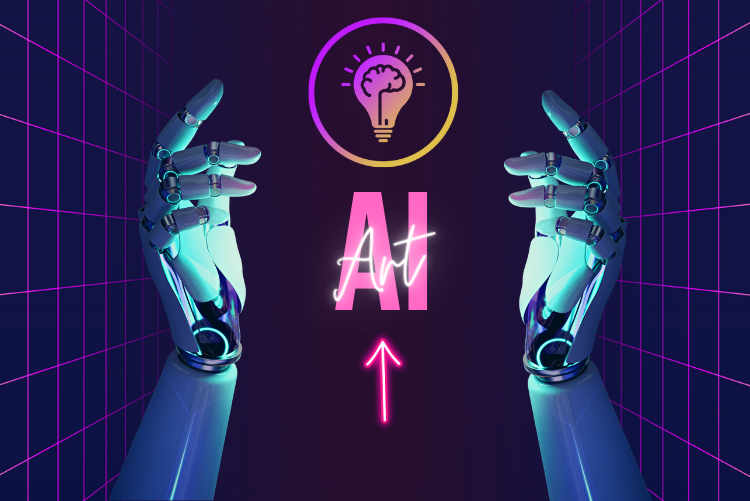
Artificial Intelligence (AI) remains at the forefront of technology trends. AI is transforming industries by automating tasks, improving decision-making processes, and enabling new levels of personalization. From natural language processing to AI-driven automation, the potential applications of AI are vast and continue to expand.
Key technology trends in AI include:
- Generative AI: Increased use of AI to generate content, from text and images to videos. Technologies like GPT-4 and DALL-E are paving the way for creative applications.
- AI in Healthcare: Advancements in AI-driven diagnostics, personalized medicine, and drug discovery. AI tools are improving accuracy in medical imaging and predictive analytics.
- AI Ethics and Governance: Growing emphasis on developing ethical guidelines and governance frameworks to address concerns about bias, fairness, and transparency in AI systems.
- Edge AI: More AI processing done on local devices (edge devices) rather than centralized cloud servers, improving response times and data privacy.
- AI in Automation: Expansion of AI-driven automation across industries, from manufacturing to customer service, enhancing efficiency and productivity
The future of AI is set to be shaped by several trends
- Human-AI Collaboration: AI systems will increasingly collaborate with humans, enhancing decision-making and creativity across various fields.
- Explainable AI: Development of AI systems that can explain their reasoning and decisions in a transparent and understandable manner.
- AI in Climate Solutions: AI will play a key role in addressing climate change through optimizing energy use, predicting environmental changes, and developing sustainable technologies.
Example of AI technology:
- AI Chatbots: AI-powered chatbots, like those used by companies such as ChatGPT or Microsoft’s Azure AI, are becoming more sophisticated in understanding and responding to customer inquiries, providing support, and automating routine tasks. They use natural language processing to deliver more accurate and contextually relevant responses
#2. Machine learning
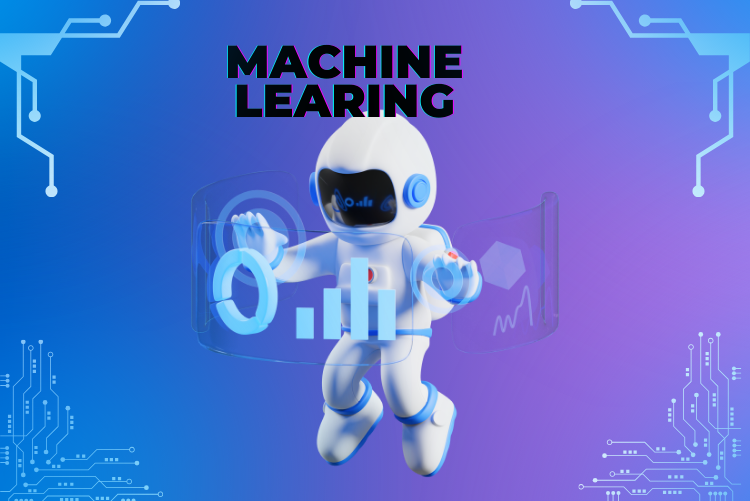
A subset of AI, Machine Learning (ML) is gaining traction as a critical technology trend. ML algorithms enable systems to learn and improve from experience, making them more efficient and accurate over time. Applications of ML include predictive analytics, recommendation systems, and real-time data analysis, driving innovation across various sectors.
Key technology trends in machine learning include:
- AutoML: AutoML platforms are making it easier for non-experts to build and deploy machine learning models by automating the selection of algorithms and hyperparameters. Tools for automated model tuning and performance optimization are improving accuracy and efficiency.
- Explainable AI (XAI): Growing focus on developing ML models that provide transparent and understandable explanations for their decisions, addressing the “black box” issue.
- Federated Learning: Techniques allowing ML models to be trained across decentralized devices or servers while keeping data local, improving privacy and security.
The future of machine learning is likely to be influenced by:
- Enhanced Personalization: ML will drive even more personalized experiences in areas such as marketing, healthcare, and education by better understanding individual preferences and behaviors.
- Cross-Domain Applications: ML models will increasingly be applied across different domains, leveraging knowledge from one field to improve outcomes in another.
- Human-AI Collaboration: ML systems will work more seamlessly with humans, augmenting human decision-making and creativity rather than replacing it.
- AI Ethics and Governance: Focus on developing robust ethical guidelines and governance structures to ensure fair, transparent, and accountable ML practices.
Example of Machine Learning Technology:
- Chatbots and Virtual Assistants: Modern chatbots, like those used in customer service or personal assistants, use ML algorithms to understand and respond to user inquiries effectively. These systems are continually trained on interactions to improve their ability to handle a wide range of queries and provide relevant responses.
#3. Quantum computing

Quantum computing is poised to revolutionize how we solve complex problems. This technology trend leverages the principles of quantum mechanics to perform computations at unprecedented speeds. Quantum computers have the potential to impact fields such as cryptography, material science, and drug discovery, offering solutions that were previously unimaginable.
Key technology trends in quantum computing include:
- Qubit Stability: Advances in developing more stable and error-resistant qubits, which are essential for practical quantum computing.
- Quantum Advantage: By leveraging quantum principles such as superposition and entanglement, quantum computers can tackle complex calculations and optimizations much faster than traditional systems.
- Hybrid Computing Solutions: These hybrid solutions combine the strengths of both classical and quantum approaches, allowing classical computers to handle standard tasks while quantum processors address problems where quantum computing provides a distinct advantage.
The future of quantum computing is expected to focus on:
- Allied market research reports quantum computing will grow at a CAGR of 56% from 2020 to 2030, with a valuation of USD 507 million to become USD 65 billion.
- Integration with AI: Combining quantum computing with artificial intelligence (AI) to enhance machine learning algorithms and solve complex data problems more efficiently.
- Scalable Quantum Systems: Development of large-scale, fault-tolerant quantum computers that can be widely used for practical applications.
Example of Quantum Computing Technology:
- Quantum Chemistry Simulations: Quantum computers can simulate molecular structures and chemical reactions with high accuracy, which is challenging for classical computers. For instance, they can model the behavior of molecules at the quantum level, potentially leading to breakthroughs in drug discovery and material science. Companies like IBM and Google are actively working on such simulations to accelerate innovation in these fields.
#4. Internet of things (IoT)

The Internet of Things (IoT) continues to grow, connecting billions of devices worldwide. This technology trend enables smarter, more efficient operations across industries. IoT applications range from smart homes and wearable technology to industrial automation and smart agriculture, enhancing connectivity and functionality.
Key technology trends in IoT include:
- Edge Computing: Increasing use of edge computing to process data closer to where it is generated, reducing latency and improving real-time decision-making.
- 5G Integration: Expansion of 5G networks to support higher data transfer speeds and connectivity for a growing number of IoT devices, enhancing performance and reliability.
- AI and IoT Convergence: Combining AI with IoT to enable more intelligent and autonomous systems, such as predictive maintenance and advanced analytics.
- Enhanced Security: Improved security measures to protect IoT devices and networks from cyber threats, including more robust encryption and secure authentication protocols.
The future of IoT is likely to be shaped by:
- Smart Cities: Expansion of IoT in urban environments to optimize infrastructure management, enhance public safety, and improve quality of life through intelligent transportation systems, waste management, and energy distribution.
- Healthcare Innovation: Growth in IoT applications for remote patient monitoring, personalized medicine, and advanced health management systems, leading to better health outcomes and efficiency.
- Industrial Automation: More widespread adoption of IoT in manufacturing and logistics to improve operational efficiency, predictive maintenance, and supply chain management.
Example of IoT Technology:
- Smart Home Systems: Devices like Amazon Echo or Google Nest integrate IoT technology to control smart home appliances, lighting, and security systems. They can be managed remotely via smartphone apps and use data from sensors to automate settings based on user preferences and behavior.
2.5. Generative AI

Generative AI is an emerging technology trend that focuses on creating new content, such as images, music, and text, using AI models. Tools like ChatGPT and DALL-E are examples of generative AI, which are transforming creative processes and offering new ways to generate content and solve problems.
Key technology trends in generative AI include:
- Advanced Text Generation: Improvements in models for producing coherent, contextually relevant, and human-like text, such as advanced versions of language models like GPT (Generative Pre-trained Transformer).
- High-Resolution Image Generation: Progress in creating photorealistic images and videos with GANs and other generative techniques, enhancing applications in design and entertainment.
- Cross-Modal Generation: Development of models that generate content across different modalities, like creating images from text descriptions or generating audio from visual inputs.
- Personalization: Enhanced ability to tailor content based on user preferences, improving experiences in marketing, entertainment, and education.
- Ethical and Responsible AI: Increased focus on addressing ethical concerns related to generative AI, including misinformation, deep fakes, and copyright issues.
The future of generative AI is expected to be influenced by:
- Creativity Enhancement: Generative AI will assist artists, designers, and writers by providing new ideas and inspirations, augmenting human creativity.
- Realistic Virtual Worlds: Creation of immersive virtual environments and avatars for gaming, virtual reality, and simulations, offering interactive experiences.
- Advanced Human-AI Collaboration: AI tools will work alongside humans to co-create content, combining human creativity with AI capabilities.
Example of Generative AI Technology:
- ChatGPT: A prominent example of generative AI is ChatGPT, a language model developed by OpenAI. It generates human-like text based on the input it receives. For instance, ChatGPT can draft emails, create stories, answer questions, and engage in conversations. This model demonstrates generative AI’s ability to produce coherent and contextually relevant text based on a wide range of prompts.
#6. Cybersecurity
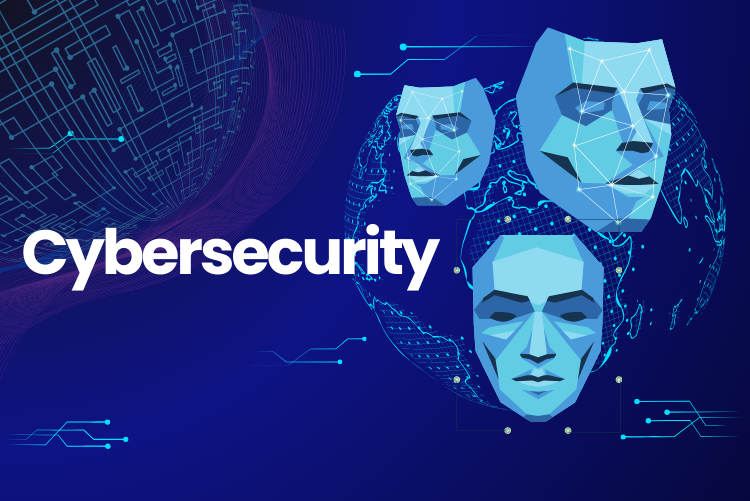
With the increasing reliance on digital systems, Cybersecurity remains a critical technology trend. Protecting data, systems, and networks from cyber threats is essential. Advanced security measures, including AI-driven threat detection, zero-trust architectures, and enhanced encryption, are crucial to safeguard against evolving cyber-attacks.
Key technology trends in cybersecurity include:
- Zero Trust Architecture: Adoption of Zero Trust models that assume no implicit trust, requiring continuous verification of user identity and device health before granting access to resources.
- AI and Machine Learning: Increased use of AI and machine learning for detecting and responding to cyber threats in real-time, identifying anomalies, and automating threat management.
- Regulations and Compliance: Increased regulatory requirements and compliance standards related to data protection and privacy, driving organizations to strengthen their cybersecurity practices.
The future of cybersecurity will likely focus on:
- Proactive Threat Hunting: Transition from reactive security measures to proactive threat hunting, where security teams actively search for potential threats and vulnerabilities before they can cause harm.
- Quantum-Resistant Security: Development of new cryptographic methods designed to protect data against future threats posed by quantum computing, which could potentially break current encryption methods.
- Cybersecurity Skills Gap: Ongoing efforts to address the shortage of skilled cybersecurity professionals through education, training programs, and automation of routine security tasks.
Example of Cybersecurity Technology:
- Multi-Factor Authentication (MFA): An example of a cybersecurity measure is Multi-Factor Authentication (MFA), which enhances security by requiring users to provide two or more verification factors to gain access to an account. For instance, logging in with a password and a one-time code sent to a mobile device adds an extra layer of security, making it more difficult for unauthorized individuals to access sensitive information.
#7. Blockchain

Blockchain technology is evolving beyond cryptocurrencies, becoming a significant technology trend in various sectors. It offers secure, transparent, and decentralized solutions for supply chain management, digital identity verification, and decentralized finance (DeFi). Blockchain’s ability to provide immutable records makes it a powerful tool for ensuring trust and security.
Key technology trends in blockchain include:
- Decentralized Finance (DeFi): Growth of DeFi platforms and applications that offer financial services (e.g., lending, borrowing, trading) without intermediaries, leveraging smart contracts on blockchain networks.
- Non-Fungible Tokens (NFTs): Continued expansion of NFTs for digital ownership and authentication of unique assets, including art, collectibles, and virtual real estate, with broader applications in gaming, entertainment, and beyond.
- Smart contracts, IoT integrations, AI convergence, and enhanced privacy over the internet are the most exciting trends by Blockchain to look forward to in 2024.
Future of Blockchain Technology:
- Mainstream Adoption: Greater integration of blockchain technology into various industries, including supply chain management, healthcare, finance, and real estate, driving efficiency, transparency, and security.
- Digital Identity: Development of decentralized identity solutions that provide users with control over their personal data and enhance privacy and security in digital interactions.
- Tokenization of Assets: The process of converting physical and digital assets into tokens on a blockchain, enabling fractional ownership, improved liquidity, and easier transferability of assets like real estate, commodities, and intellectual property.
Example of Blockchain Technology:
- Cryptocurrencies: One of the most well-known applications of blockchain technology is cryptocurrencies like Bitcoin and Ethereum. Bitcoin uses blockchain to enable peer-to-peer transactions without a central authority, ensuring transparency, security, and resistance to censorship. Ethereum extends this by supporting smart contracts, allowing developers to create decentralized applications (dApps) that run on its blockchain. These innovations have spurred the development of various blockchain-based solutions and have driven significant interest and investment in the technology
#8. Metaverse

The concept of the Metaverse is rapidly gaining attention as a transformative technology trend. The Metaverse refers to a collective virtual shared space, created by the convergence of virtually enhanced physical reality and physically persistent virtual reality. It offers new possibilities for social interaction, work, and entertainment, integrating digital and physical experiences.
Key technology trends in the metaverse include:
- Enhanced VR/AR Technologies: Continued advancements in VR and AR hardware and software, providing more immersive and realistic experiences with better graphics, lower latency, and improved user interfaces.
- Virtual Commerce: Expansion of e-commerce within the metaverse, where users can buy, sell, and trade virtual goods and services, including virtual real estate, fashion, and collectibles.
- Integration with AI: Incorporation of AI to create more intelligent and responsive virtual environments, including AI-driven avatars, personalized experiences, and adaptive content.
Future of Metaverse Technology:
- Unified Virtual Ecosystem: Development of a cohesive and interoperable metaverse ecosystem where users can seamlessly transition between different virtual worlds and experiences.
- Real-World Integration: Greater integration of the metaverse with real-world applications, such as virtual tourism, remote work, and hybrid events that combine physical and digital elements.
- Economic Impact: Significant growth in the virtual economy, with new business models and job opportunities emerging within the metaverse, including virtual real estate development, digital fashion design, and virtual event planning.
Example of Metaverse Technology:
- Virtual Concerts: An example of the metaverse in action is virtual concerts, where artists perform live in virtual environments, allowing fans from around the world to attend and interact in real-time. Platforms like Fortnite and Roblox have hosted virtual concerts featuring major artists, offering immersive and interactive experiences that blend music, gaming, and social interaction. These events showcase the potential of the metaverse to create new forms of entertainment and community engagement.
#9. Edge Computing

Edge computing is becoming increasingly important as a technology trend. It involves processing data closer to the source, reducing latency and bandwidth use. This trend supports real-time applications such as autonomous vehicles, smart cities, and industrial automation, providing faster and more efficient data processing.
Key technology trends in edge computing include:
- 5G Integration: The rollout of 5G networks will accelerate edge computing adoption by providing the necessary high-speed, low-latency connectivity.
- AI and Machine Learning at the Edge: Increased deployment of AI and machine learning models at the edge for real-time analytics and decision-making, reducing the reliance on centralized processing.
- Industrial IoT (IoT): Growth in edge computing applications within manufacturing, oil and gas, and other industries, enabling smarter and more efficient operations through real-time monitoring and control.
- Edge Cloud Integration: Seamless integration between edge and cloud computing, providing a hybrid approach that leverages the strengths of both paradigms for optimal performance and flexibility.
Future of Edge Computing Technology:
- Widespread Adoption: Edge computing will become more prevalent across various sectors, including healthcare, retail, smart cities, and transportation, providing tailored solutions to meet specific needs.
- Innovation in Hardware: Advances in edge-specific hardware, such as edge servers, gateways, and specialized chips, will enhance processing capabilities and energy efficiency.
- Regulatory Compliance: As data privacy regulations become stricter, edge computing will play a crucial role in ensuring compliance by keeping sensitive data local and under control.
Example of Edge Computing Technology:
- Smart Cities: An example of edge computing in action is its application in smart cities. Edge devices like cameras and sensors placed throughout a city can process data locally to monitor traffic conditions, manage energy usage, and enhance public safety in real-time. For instance, traffic cameras equipped with edge computing capabilities can analyze video footage on-site to detect accidents or congestion and adjust traffic signals accordingly, improving traffic flow and reducing response times for emergency services.
#10. 5G Technology

The deployment of 5G technology is set to revolutionize connectivity. This technology trend offers faster speeds, lower latency, and greater capacity than previous generations. 5G will enable advancements in IoT, autonomous vehicles, and smart cities, driving innovation and improving connectivity worldwide.
Key technology trends in 5G include:
- IoT: Industrial IoT with 5G will significantly improve massive machine-type communications (mMTC), enabling efficient factory automation, smart manufacturing, and precision agriculture.
- Edge Computing Integration: Increased deployment of edge computing resources to process data closer to where it is generated, reducing latency and enhancing real-time capabilities for applications like autonomous vehicles and smart manufacturing.
- Enhanced Security: Development of advanced security protocols and measures to protect 5G networks from cyber threats, ensuring secure communication for critical applications
Future of 5G Technology:
- Innovation in Applications: Emergence of new applications and services that leverage 5G’s capabilities, including augmented reality (AR), virtual reality (VR), and immersive media experiences.
- Industry Transformation: Continued transformation of industries such as healthcare, transportation, and entertainment, driven by 5G-enabled innovations and efficiencies.
- Global Connectivity: Achieving a more interconnected world with seamless communication and collaboration across borders, supporting global business and social initiatives.
Example of 5G Technology:
- Autonomous Vehicles: An example of 5G technology in action is its application in autonomous vehicles. 5G’s low latency and high reliability enable real-time communication between vehicles and infrastructure, improving safety and efficiency. For instance, autonomous cars can receive instant updates about road conditions, traffic signals, and other vehicles’ positions, allowing them to make split-second decisions and navigate complex environments. This capability is critical for the widespread adoption and success of autonomous driving technology.
#11. Virtual Reality (VR) and Augmented Reality (AR)
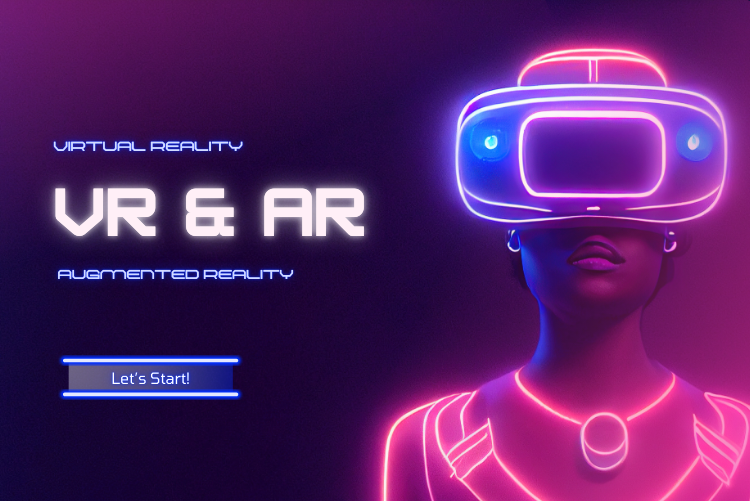
Virtual Reality (VR) and Augmented Reality (AR) continue to evolve as major technology trends. VR immerses users in a fully digital environment, while AR overlays digital information on the real world. These technologies are finding applications in gaming, education, healthcare, and remote work, offering new ways to interact with digital content.
Key technology trends in VR and AR include:
- Enhanced Display Technology: Improvements in resolution and refresh rates for VR headsets and AR glasses, providing more realistic and comfortable experiences.
- Wireless and Standalone Devices: Increased adoption of wireless VR headsets and standalone AR devices, enhancing mobility and ease of use.
- Haptic Feedback and Sensory Integration: Advanced haptic feedback systems and other sensory integrations to increase immersion and realism in both VR and AR environments.
- Social and Collaborative Spaces: Growth in platforms that enable users to interact and collaborate in virtual and augmented spaces, fostering new forms of social interaction and communication.
- Enterprise Applications: Expansion of VR and AR applications in training, maintenance, and operations across various industries, providing safe and efficient environments for skill development and task execution.
Future of VR and AR Technology:
- Hyper-Realistic and Ubiquitous Experiences: Advancements in graphics, AI, and processing power will lead to even more realistic and complex environments, and the technology will become a part of everyday life.
- Seamless Integration: VR and AR will be seamlessly integrated into various devices and applications, making immersive technology a regular aspect of daily activities and professional tasks.
- AI-Powered Personalization: Enhanced experiences through AI integration, offering more personalized and intelligent interactions tailored to individual user preferences.
Example of VR and AR Technology:
- Immersive Education and Training: A combined example of VR and AR in action is their use in education and training. VR can provide fully immersive simulations for complex training scenarios, such as medical procedures or industrial operations, allowing learners to practice in a safe, controlled environment. AR can complement this by overlaying instructional information or real-time guidance on physical equipment or environments during actual operations, enhancing learning and performance without removing users from the real world.
#12. Sustainable Technology
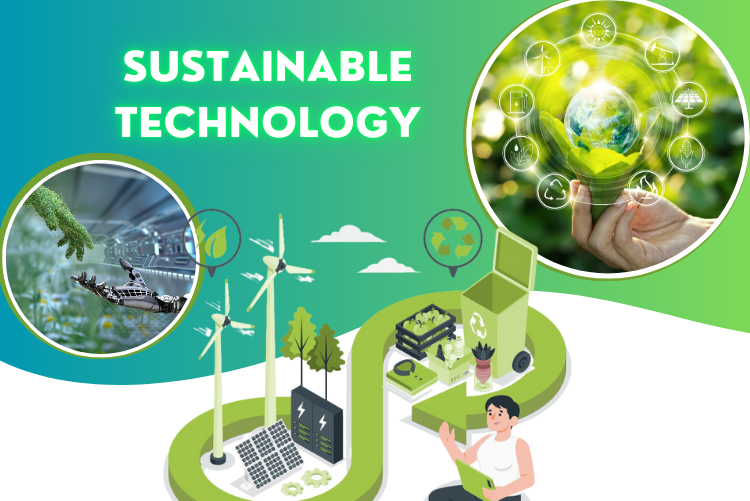
Sustainability is becoming a core focus in technology development, making sustainable technology a critical technology trend. Innovations in renewable energy, energy storage, and eco-friendly materials are essential to address climate change and environmental challenges. Sustainable technology aims to reduce the environmental impact of human activities and promote a circular economy.
Key technology trends in sustainable technology include:
- Advanced Solar Power: Continued advancements in solar technology, including higher efficiency solar panels, solar roof tiles, and solar energy storage solutions, making solar power more accessible and affordable.
- Electric and Hydrogen Vehicles: Growth in the adoption of electric vehicles (EVs) and hydrogen fuel cell vehicles, along with the expansion of charging and refueling infrastructure, reducing greenhouse gas emissions from transportation.
- Smart Grids: Development of smart grid technology that enhances the efficiency, reliability, and resilience of electricity distribution, integrating renewable energy sources and supporting demand response.
- Carbon Capture and Storage (CCS): Innovations in capturing and storing carbon dioxide emissions from industrial processes and power plants, helping to mitigate climate change.
- Waste-to-Energy: Technologies that convert waste materials into energy, such as biogas from organic waste and energy recovery from non-recyclable plastics, reducing landfill use and generating renewable energy.
Future of Sustainable Technology:
- Integration with IoT and AI: Enhanced use of Internet of Things (IoT) devices and artificial intelligence (AI) to optimize resource use, monitor environmental conditions, and improve efficiency in various sectors.
- Sustainable Supply Chains: Implementation of sustainable practices throughout supply chains, from raw material sourcing to production and distribution, promoting transparency and reducing environmental impact.
- Consumer Awareness and Adoption: Increasing consumer demand for sustainable products and services, driving innovation and adoption of sustainable technologies by businesses and industries.
Example of Sustainable Technology:
- Smart Homes: An example of sustainable technology in action is the development of smart homes that utilize IoT devices to optimize energy use. Smart thermostats, lighting systems, and appliances can be programmed to reduce energy consumption during peak hours, monitor and manage energy use in real-time, and integrate with renewable energy sources like solar panels. These systems not only lower utility bills but also reduce the overall carbon footprint of households.
#13. Web 3.0
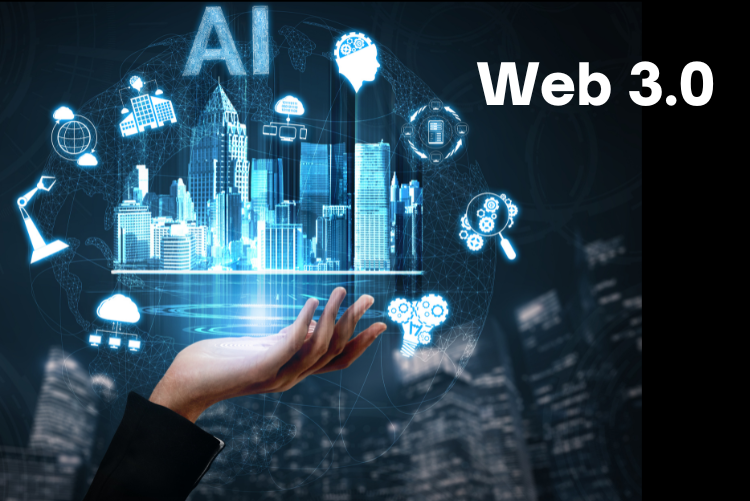
Web 3.0, or the Semantic Web, represents the next phase of internet evolution. It focuses on decentralization, user control, and enhanced data interoperability. Unlike Web 2.0, which is characterized by centralized platforms, Web 3.0 leverages technology trends such as blockchain and decentralized networks to provide users with greater control over their data and interactions.
Key technology trends in Web 3.0 include:
- Decentralization: Web 3.0 aims to reduce reliance on centralized platforms by leveraging blockchain and decentralized technologies. This enables peer-to-peer interactions and reduces the control exerted by major tech companies.
- Semantic Search: Improved search capabilities with context-aware algorithms that understand user intent and provide more relevant and personalized results.
- Data Ownership: Enhanced mechanisms for users to control and monetize their own data, empowering individuals with greater privacy and ownership over their online information.
- Decentralized Applications (dApps): Growth in dApps that operate on blockchain networks, providing new ways to interact, transact, and collaborate online without intermediaries.
The future of Web 3.0 is shaped by several promising technology trends:
- Broader Adoption: Increased use of decentralized technologies and blockchain networks across various sectors.
- Enhanced Interoperability: Improved integration between different decentralized services and platforms.
- Advanced User Control: More sophisticated tools for managing and monetizing personal data.
- Evolving Standards: Creation of new protocols and standards to support Web 3.0 functionalities and ensure seamless user experiences.
Example of Web 3.0 Technology:
- Ethereum: Ethereum is a decentralized, open-source blockchain platform that supports smart contracts and decentralized applications (dApps). It allows developers to build and deploy their own dApps and decentralized finance (DeFi) protocols. Ethereum’s platform has enabled a broad range of Web 3.0 innovations, including tokenization, DeFi, and NFT markets
#14. Smell-O-Vision Technology

Smell-O-Vision Technology involves creating and experiencing smells through specialized devices. Initially used in the healthcare sector, this technology trend allows users to experience different scents, such as fresh bread or the ocean, often alongside visual media. It works by emitting specific odors through devices or masks, adding a sensory dimension to digital experiences.
Trends in Smell-O-Vision Technology:
- Integration with Virtual Reality (VR): Smell-O-Vision is being combined with VR to create more immersive experiences by adding scents to virtual environments.
- Improved Scent Delivery Systems: Advances are being made in scent technology to deliver a broader range of smells more accurately and effectively.
- Healthcare Uses: There is growing interest in using Smell-O-Vision for therapeutic applications, such as sensory stimulation and rehabilitation in medical settings.
Future of Smell-O-Vision Technology:
- Enhanced Sensory Integration: Developing more sophisticated systems for a wider range of smells and more precise delivery.
- Broader Applications: Expanding use cases beyond entertainment and healthcare to include education, marketing, and other fields.
- Overcoming Challenges: Addressing issues like temperature sensitivity and improving the overall practicality and effectiveness of scent technology.
Example of Smell-O-Vision Technology:
- Feelreal VR Mask: Feelreal is a VR mask that integrates multiple sensory elements, including scent, to enhance virtual reality experiences. Feelreal demonstrates how Smell-O-Vision technology can enhance digital media interactions, making virtual environments more immersive and multi-sensory.
#15. Robotic Automation

Robotic Automation refers to the use of robots and automated systems to perform repetitive, routine tasks typically carried out by humans. This technology trend integrates robotics, sensors, and software to enhance operational efficiency, accuracy, and productivity across various industries.
Key technology trends in Robotic Automation include:
- Collaborative Robots (Cobots): Designed to work alongside humans, cobots are used in environments where human-robot interaction is beneficial, such as in small-scale manufacturing or assembly lines.
- Advanced AI Integration: Incorporating AI enables robots to perform complex tasks, make decisions based on data, and interact more effectively with their environment.
- Robotics as a Service (RaaS): Companies are offering robotics solutions on a subscription basis, making advanced automation more accessible to businesses of all sizes.
- Industrial Internet of Things (IIoT): Integration with IIoT technologies allows robots to communicate and coordinate with other machines and systems, enhancing overall production efficiency.
- Autonomous Mobile Robots (AMRs): These robots navigate and perform tasks in dynamic environments, such as warehouses or logistics centers, without human guidance.
Future of Robotic Automation:
- Increased Adoption: Robotics and automation will continue to expand across various industries, including manufacturing, healthcare, logistics, and agriculture.
- Enhanced Capabilities: Future robots will have improved AI, better sensory capabilities, and greater flexibility to handle diverse tasks.
- Human-Robot Collaboration: The focus will shift towards optimizing human-robot collaboration, where robots complement human skills and enhance productivity.
Example of Robotic Automation:
- Boston Dynamics’ Spot: Spot is a versatile, autonomous mobile robot developed by Boston Dynamics. It can navigate various terrains, perform inspections, and carry payloads. Spot showcases how robotic automation can be applied to diverse tasks, improving efficiency and capabilities in various sectors.
FAQ
Why are technology trends important?
Technology trends are crucial because they help businesses stay competitive, improve efficiency, and enhance customer experiences. They also aid in anticipating market changes and managing risks.
Why are technology trends important?
Technology trends provide insights into the latest innovations, helping businesses make informed decisions, drive growth, and address emerging challenges effectively.
How do you keep up with technology trends?
To stay updated on technology trends, follow tech news sources, subscribe to industry reports, attend conferences, and engage with experts on social media.
What are the digital innovation technology trends in 2025?
In 2025, technology trends include Web 3.0 with its focus on decentralization, generative AI for content creation, quantum computing, 5G technology for faster connectivity, edge computing for data processing, and advances in VR and AR for immersive experiences.
Conclusion
The technology trends of 2024 and 2025 promise to bring significant advancements that will reshape our world. From AI and quantum computing to IoT and sustainable technology, these innovations will drive progress and create new opportunities. Staying informed about these trends is essential for businesses and individuals alike, as we navigate the exciting and ever-evolving landscape of technology.
By understanding and leveraging these technology trends, we can better prepare for the future, harnessing the power of technology to improve our lives and address some of the world’s most pressing challenges.



